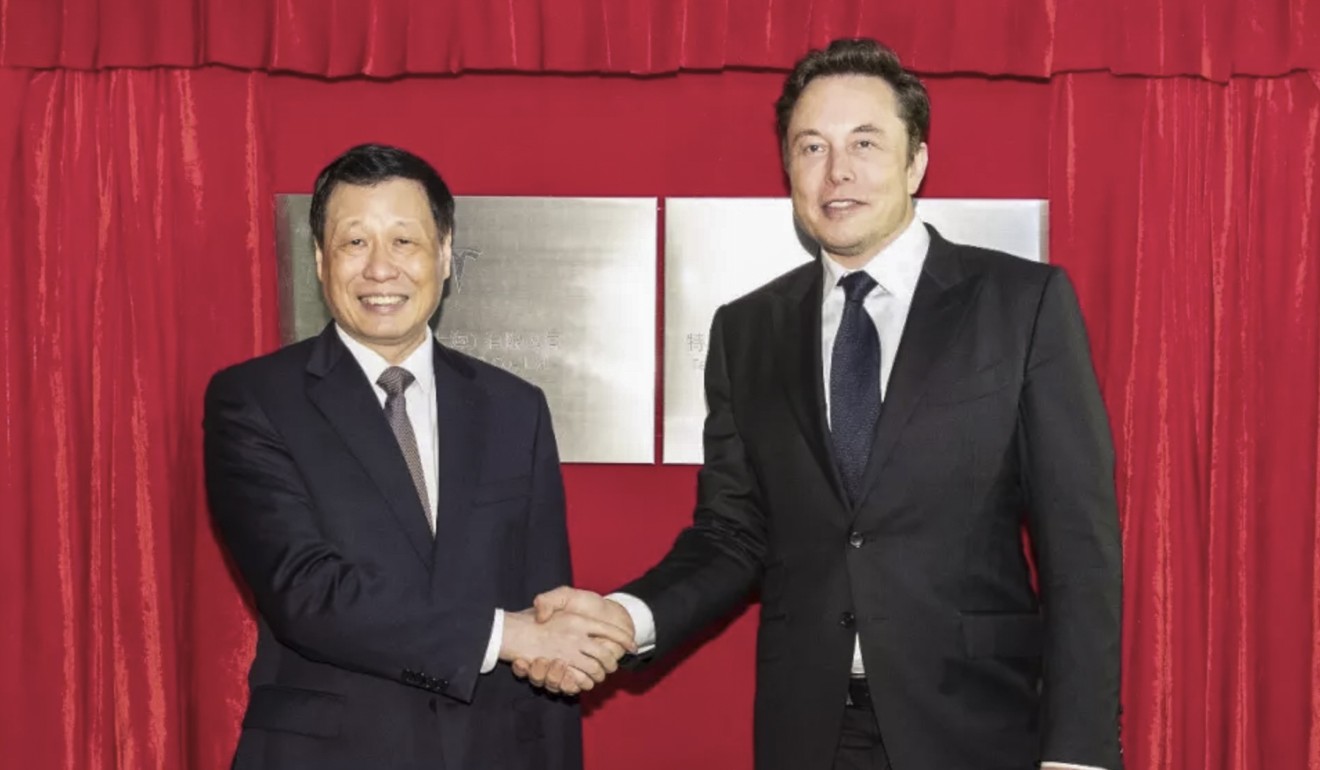
Tesla flags path towards profit as Model 3 worries steady, to tap Asian debt markets to fund China factory
Car maker is now back on track to retake the title of most valuable US carmaker from General Motors Co.

Tesla said it would produce its new Model 3 sedan at a profit after several recent weeks in which output stabilised, buoying hopes that the electric vehicle maker led by Elon Musk will stanch its financial losses in the second half of the year.
Chief Executive Musk is under intense pressure to prove he can deliver consistent production numbers for the sedan, Tesla’s lowest-priced model and the key to its plans to become a mass-market carmaker, after a host of manufacturing challenges and concerns it was running through cash too quickly.
Despite Tesla reporting a record loss that doubled to US$718 million in the second quarter, shares jumped as much as 11 per cent in after-hours trading, as investors focused on steadier production volumes and a slower rate of cash burn. That put it on track to retake the title of most valuable US carmaker from General Motors Co.
The company cut its capital spending plans and said it would not hit its long-term rate of producing 10,000 Model 3s per week until next year, trading off production ramp speed for financial health.
“We like the more muted tone of the company’s outlook, with the absence of unnecessary new stretch goals,” said CFRA analyst Efraim Levy. “Perhaps it reflects a more cautious Elon Musk.”
The outspoken Musk, who told analysts last quarter that he refused to answer their “boring” questions, apologised multiple times on Wednesday during a post-earnings call for his past behavior.
Tesla said that during July it had hit an earlier goal of building about 5,000 Model 3s per week “multiple times”, and reiterated a target of producing 6,000 per week by late August. Analysts have questioned whether the 5,000 rate would be sustainable.
It expects to build a total of up to 55,000 Model 3s in the third quarter, which works out to an average weekly rate of 4,230, at a roughly 15 per cent gross margin, rising to 20 per cent in the fourth quarter.
Tesla delivered its 200,000th electric car – including its more expensive Model S and X vehicles – in July, a threshold which means a US$7,500 federal subsidy will remain in place to the end of the year.
Had it delivered the car in June, the subsidy would have lapsed a quarter earlier, a strategic move applauded by Ross Gerber, chief executive of Gerber Kawasaki Wealth and Investment Management, which holds Tesla shares.
Tesla plans to pay off its upcoming debt – some US$1.8 billion comes due before November 2019 – through internally generated cash flow, Musk said. Tesla ended the second quarter with US$2.78 billion in cash after spending US$610 million in capital expenses.
Free cash flow, a key metric of financial health, narrowed to negative US$740 million in the second quarter from negative US$1 billion in the first quarter, excluding solar business costs.
Tesla has begun to lay off 9 per cent of its workforce as it tightens spending. Tesla said its capital expenses would be slightly below US$2.5 billion in 2018, less than last year’s US$3.4 billion.
The company also outlined expansion plans, saying it would likely announce the location of a European factory this year and planned a Shanghai, China plant to produce both vehicles and batteries. Tesla’s China investment would not start “in any significant way” until 2019, with much of the roughly US$2 billion cost to be funded via Asian debt markets.

In the electric vehicle maker’s second-quarter earnings statement, published after the market close, Chief Executive Elon Musk said that he expected much of the car assembly plant to be “funded through local debt.”
On the conference call following the earnings release he said: “For China I think our default plan will be to use essentially a loan from local banks in China and fund the (Gigafactory) in Shanghai with local debt.”
The carmaker said in July that it had agreed with the Chinese government to manufacture vehicles in Shanghai, the first of its so-called Gigafactories to be built outside of the US.
Tesla will need to raise debt because manufacturing challenges have left the company with a shortage of cash. Analysts said they believed Musk is turning to Asian markets because it is unlikely he would have been able to secure the sort of favourable terms from US bond investors he did for his US$1.8 billion junk bond, issued in 2017 with a 5.3 per cent coupon.
“Given the Chinese new energy vehicle laws in place, I would expect the terms of the debt to promote an electric vehicle factory and battery factory to be more accommodating than the US markets right now,” said Jeffrey Osborne, managing director, sustainable energy and industrial technology at Cowen Inc.